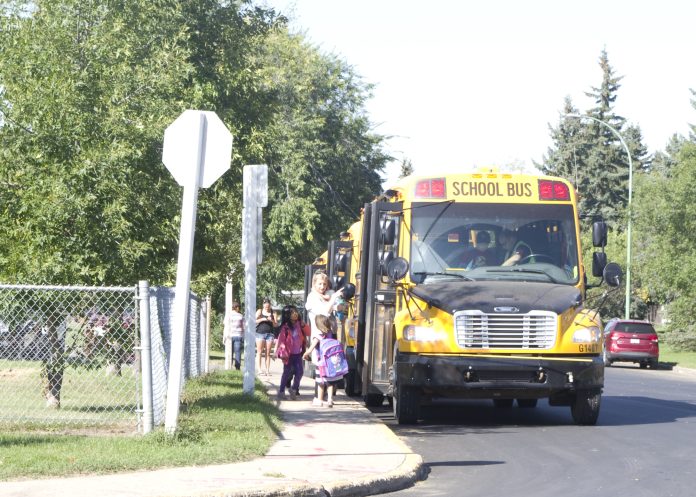
Prince Albert schools will see an increase in activity when students return to the classroom on Sept. 1, and that means more pedestrians and more vehicles on the road.
With that in mind, safety advocates have urged drivers to be patient as students settle into their new school routine. They’ve also asked parents to make sure their children know exactly where they’re going and the safest way to get there.
“We have thousands of kids who are going to be riding the bus as they commute back into the City each and every day and then head back home,” Parkland Ambulance Care Ltd. spokesman Lyle Karasiuk said. “We want people to be safe on both aspects.”
For drivers, that means reducing speeds around school zones, something they aren’t required to do in the summer. It also means being mindful of all the extra activity on their block.
For parents, that means showing their children how to get from home to school and back without putting themselves in a vulnerable position.
“You want to make sure that moms and dads are starting to tell their kids, ‘okay, here’s the crosswalk, here’s where you need to cross, here’s the path you should use, if you run into trouble along the way this is a neighbour’s house you can stop at to be safe, those sorts of aspects,” Karasiuk said.
Stats from the Saskatchewan Prevention Institute show child pedestrians are most likely to be hurt in the months of September, October and November, with the after-school hours of 3 p.m. to 6 p.m. being the most dangerous.
The SPI encouraged parents to educate their children about safety as a way to reduce injuries and hospitalizations, and promotes cross-guard programs for elementary school children. However, much of the responsibility relies with drivers.
“Children are not just small adults,” Robyn Stewart, the SPI’s Child Injury Prevention Program Coordinator wrote in a press release. “Young children are not yet capable of understanding the dangers of crossing the street. Until children are about nine years of age they are still developing the vision, hearing, and perception that is necessary to independently navigate traffic.”
SPI stats show roughly 29 child and youth pedestrian hospitalizations each year. Lower extremity, head, and neck injuries account for nearly 70 per cent of those hospitalizations.
Karasiuk said Parkland Ambulance rarely has to deal with student pedestrian injuries during the first week back at school. That’s a trend he hopes will continue for another year.
“I don’t want to jinx myself in any way, but we’ve been pretty good with people obeying the posted speed limit, watching for pedestrians who are crossing, and certainly on the highway, obeying the school bus that is stopping with the red flashing lights and red flashing stop arm,” he said.
“We actually see very few incidents. I think, for the most part, people are very mindful of the added traffic.”
And for drivers who are a bit nervous about navigating the Prince Albert streets and avenues as students return to school? Karasiuk said a little common sense goes a long way.
“When we see the bus with its hazards (on) in a residential area, it’s likely not there for any other purpose than to load or unload children,” he said. “Just stop, yield, and let the kids who might be running late the first few days, or be a little bit excited to be with their pals, get on and off the bus. Just watch in residential areas.”
Students head back to school for their first day on Thursday, Sept. 1.

